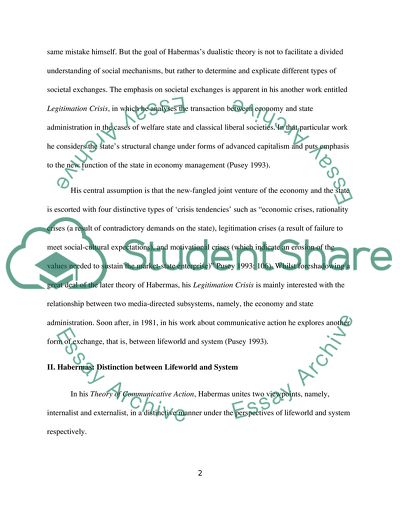Cite this document
(Modernity in Habermass Lifeworld and System Research Paper, n.d.)
Modernity in Habermass Lifeworld and System Research Paper. Retrieved from https://studentshare.org/philosophy/1725976-describe-habermass-distinction-between-lifeworld-and-system-in-what-ways-if-any-does-it-add-to-our-understanding-of-modernity
Modernity in Habermass Lifeworld and System Research Paper. Retrieved from https://studentshare.org/philosophy/1725976-describe-habermass-distinction-between-lifeworld-and-system-in-what-ways-if-any-does-it-add-to-our-understanding-of-modernity
(Modernity in Habermass Lifeworld and System Research Paper)
Modernity in Habermass Lifeworld and System Research Paper. https://studentshare.org/philosophy/1725976-describe-habermass-distinction-between-lifeworld-and-system-in-what-ways-if-any-does-it-add-to-our-understanding-of-modernity.
Modernity in Habermass Lifeworld and System Research Paper. https://studentshare.org/philosophy/1725976-describe-habermass-distinction-between-lifeworld-and-system-in-what-ways-if-any-does-it-add-to-our-understanding-of-modernity.
“Modernity in Habermass Lifeworld and System Research Paper”, n.d. https://studentshare.org/philosophy/1725976-describe-habermass-distinction-between-lifeworld-and-system-in-what-ways-if-any-does-it-add-to-our-understanding-of-modernity.


